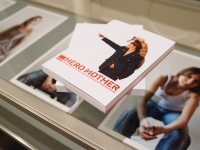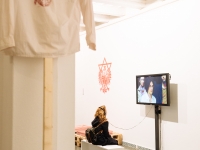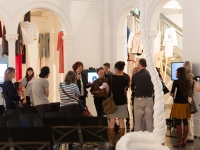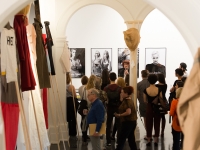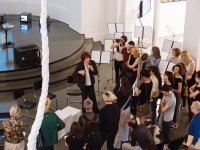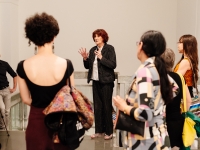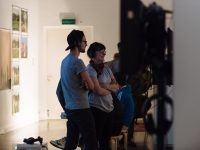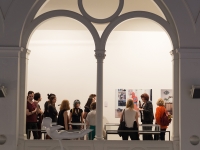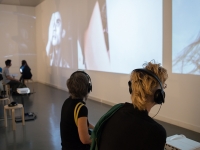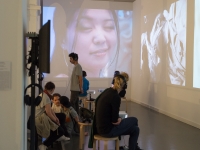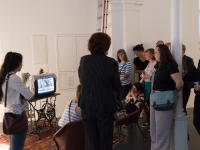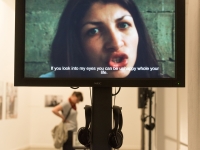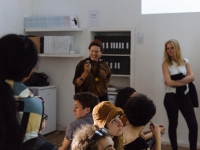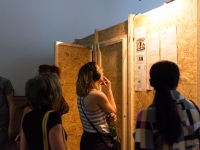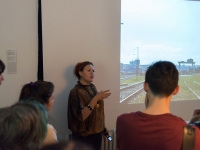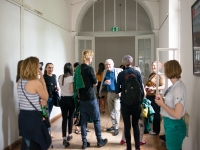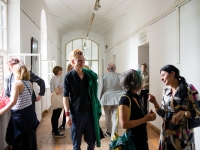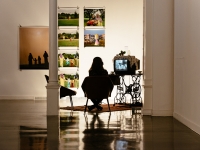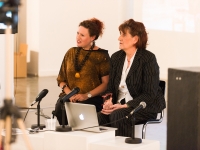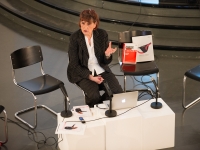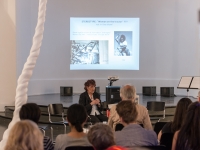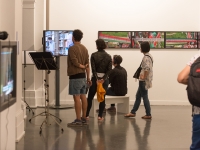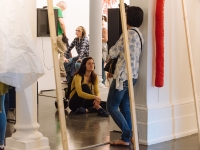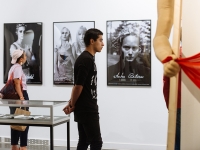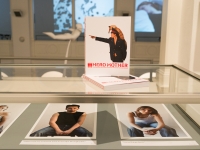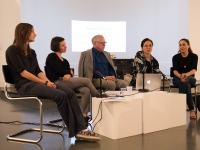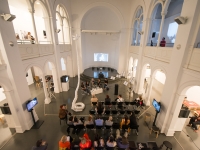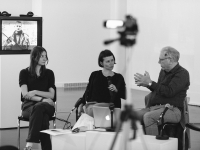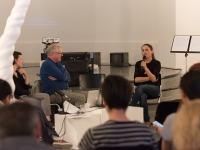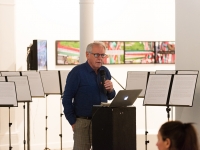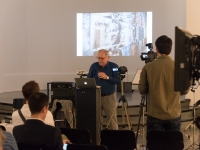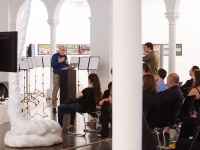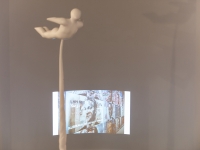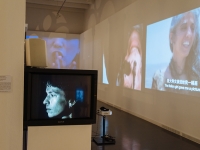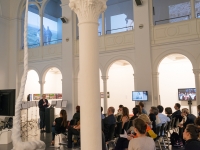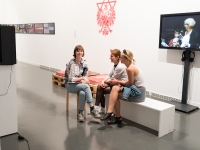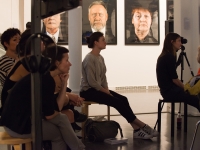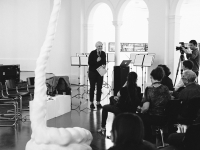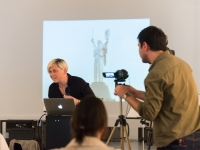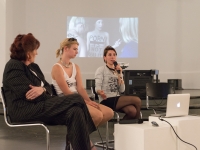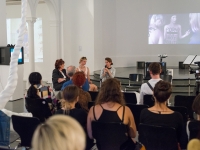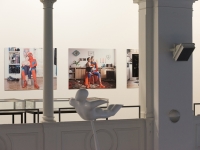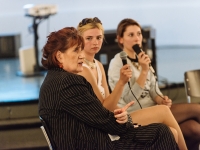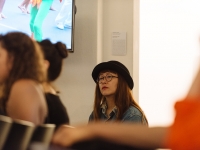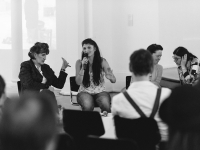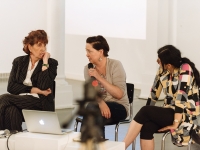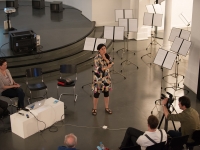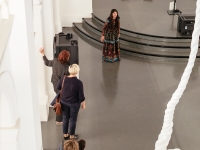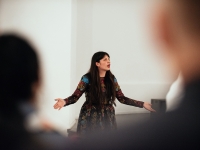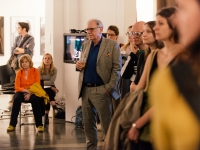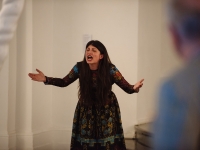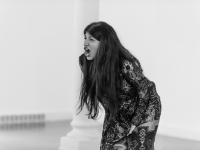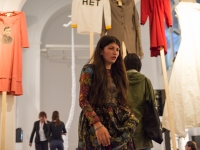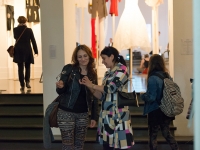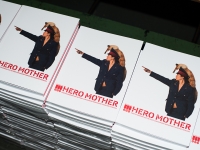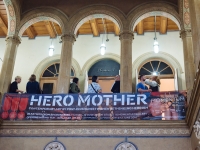Let’s Conclude
The HERO MOTHER Symposium & Finissage
12 June @ 1 – 9pm
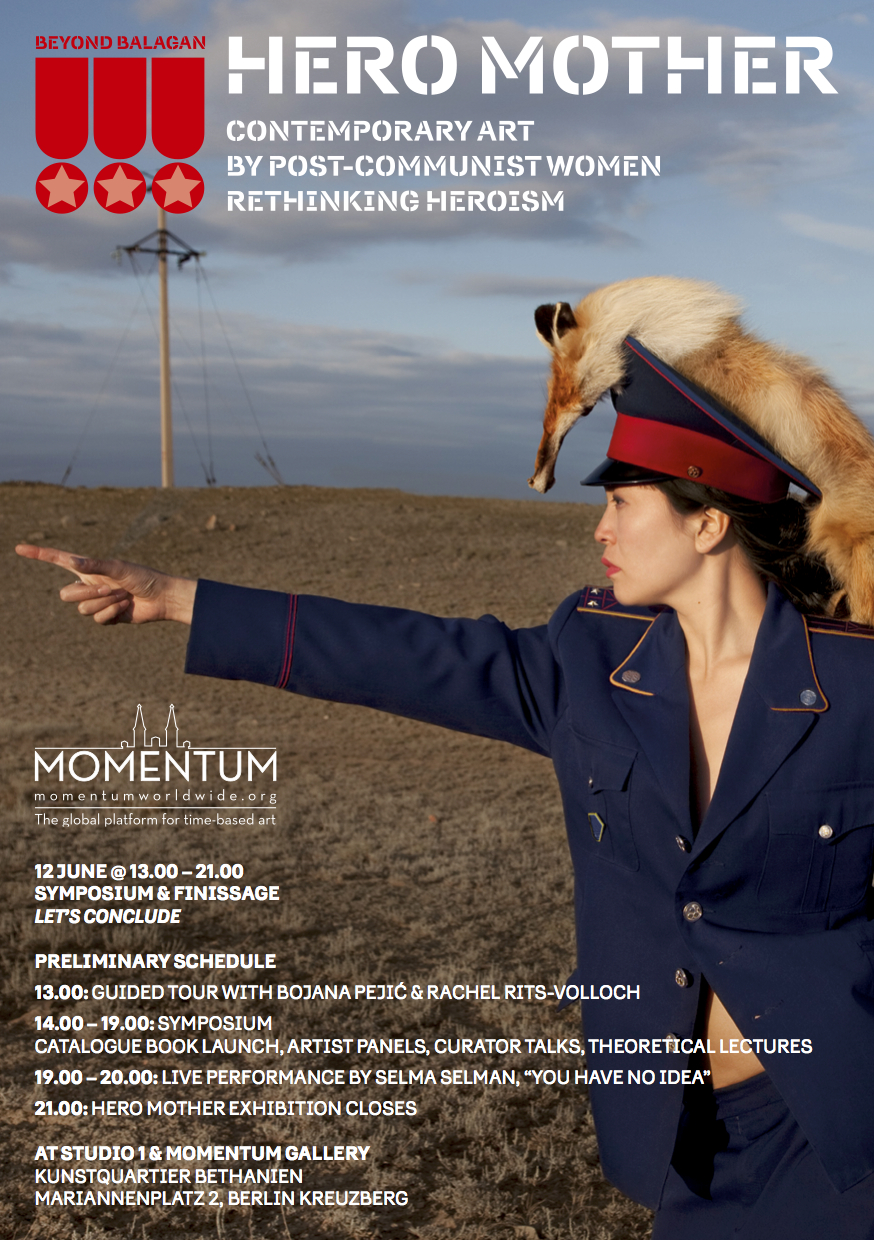
The Symposium is part of the Exhibition
HERO MOTHER
Contemporary Art by Post-Communist Women Rethinking Heroism
Curated by Bojana Pejić and Rachel Rits-Volloch
14 May – 12 June 2016
 |
Guided Tour with Bojana Pejić and Rachel Rits-Volloch:
Symposium Videos:
RESISTING THE LIMITS OF NOW
By Bojana Pejić
ARTIST PANEL
With Nguyen Trin Thi, Sasha Pirogova, Mariana Vassileva,
Marina Belikova, moderated by David Elliott
BACK TO BALAGAN!!!
By David Elliott
MOTHERS, HEROES AND HISTORY’S PLAYGROUND
By Laima Kreivyte
FEMEN ACTIVISM
Bojana Pejić in discussion with
two members of FEMEN Germany
ARTIST PANEL
with Else Twin Gabriel, Nezaket Ekici and Selma Selman,
moderated by Bojana Pejić
Closing Performance You Have No Idea by Selma Selman:
Speakers:
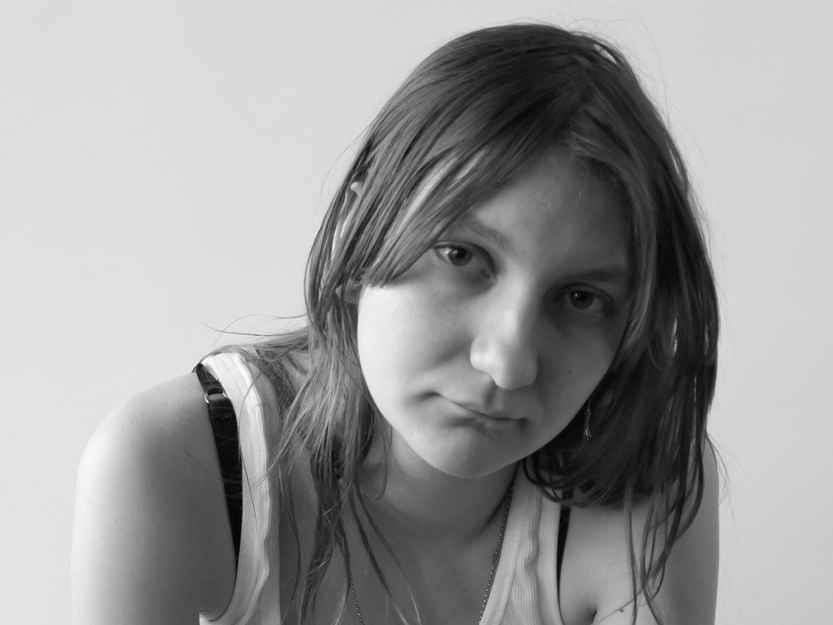
Marina Belikova
Marina Belikova is an artist, born in Moscow, Russia. Between 2005-2011 she studied Graphical web-design & E-commerce in the National Research University Higher School of Economics, and then in 2011 moved to the Moscow Institute of Electronics and Mathematics (Technical University) and graduated with an honours degree. In 2012-2013 she did an M.A. in Communication Design: Graphic Design in Kingston University London. In 2013 she started her degree at Bauhaus University Weimar, where she is currently doing an M.F.A. in Media Art and Design.
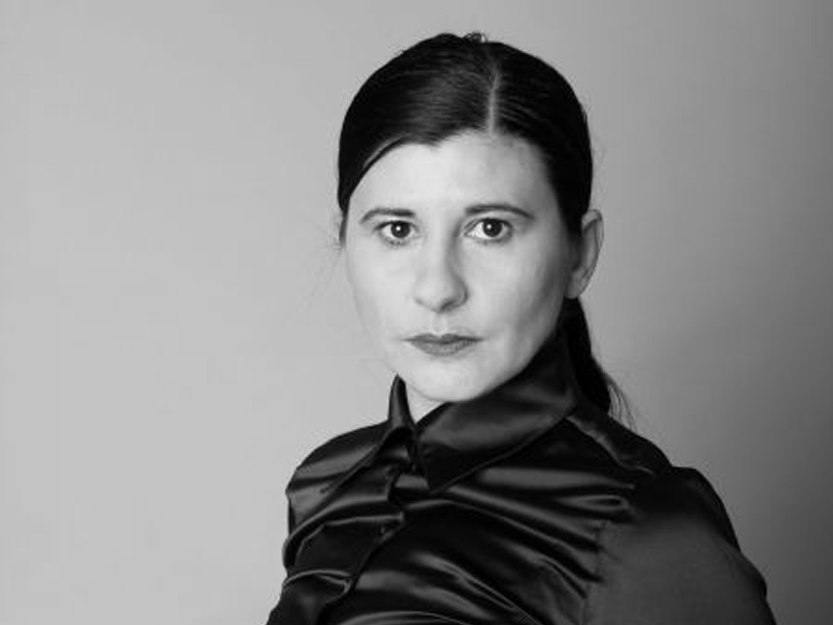
Nezaket Ekici
Nezaket Ekici’s video, installations and performances are often process-based and ask viewers to derive their own emotional and intellectual interpretations. Activated by the audience, the use of her body as a means of expression becomes a vital material in her work, where complex, often controversial topics are countered by their aestheticizing presentation. Ekici frequently uses her own Turkish origins and education as a subject of tension, pitting her background against her living environment in present-day Germany. Cultural, geographic and individual boundaries, transgressions, gender, cross-border connections and authorial bodies are central to Ekici’s works. By highlighting these themes in everyday life and placing them in a new context, she aims to interconnect every element to form a total work of art — a Gesamtkunstwerk.
Born in Kırşehir, Turkey in 1970, Ekici studied art pedagogics, sculpture and performance in Munich and Braunschweig, Germany. She then began working with performance and completed a master’s degree in Performance Art with Marina Abramović. She has exhibited internationally, with a total of more than 120 different performances on 4 continents in more than 100 cities and 30 countries. She currently lives and works in Berlin and Stuttgart.
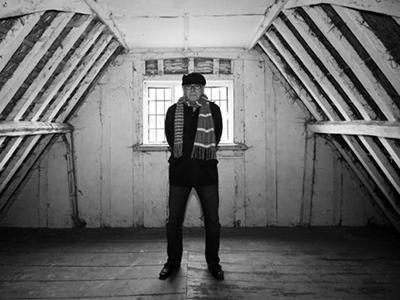
David Elliott
David Elliott is an English born curator and writer. He was Director of the Museum of Modern Art in Oxford, England (1976-1996); Director of Moderna Museet [The National Museum of Modern and Contemporary Art] in Stockholm, Sweden (1996-2001); Founding Director of the Mori Art Museum in Tokyo (2001-2006); the first Director of the Istanbul Museum of Modern Art [Istanbul Modern] (2007); Artistic Director of The Beauty of Distance: Songs of Survival for a Precarious Age, the 17th Biennale of Sydney (2008–2010); in 2012 he was Artistic Director of The Best of Times, The Worst of Times, Rebirth and Apocalypse in Contemporary Art, the 1st International Kyiv Biennale of Contemporary Art (2011-12); he was Artistic Director of A Time for Dreams, the IV International Moscow Biennale of Young Art (2014). David Elliott was the Rudolf Arnheim Guest Professor in Art History at the Humboldt University, Berlin (2008) and Visiting Professor in Museum Studies at the Chinese University in Hong Kong (2008/11/13). From 1998 until 2004 he was President of CIMAM (the International Committee of ICOM for Museums of Modern Art). He is Hon President of the Board of Triangle Art Network/Gasworks in London. A specialist in Soviet and Russian avant-garde, as well as in modern and contemporary Asian art, he has published widely in these fields as well as on many other aspects of contemporary art. In 1996 he was co-curator of Kunst und Macht im Europa der Diktatoren 1930 bis 1945 at the Hayward Gallery, London and the Deutsches Historisches Museum in Berlin and in 2000-2001 was Artistic Director of the exhibition After the Wall: Art and Culture in Post-Communist Europe at Moderna Museet, Stockholm, Ludwig Museum, Budapest and Hamburger Bahnhof, Berlin. In 2011 he curated Between Heaven and Earth. Contemporary Art from the Centre of Asia at Calvert 22, London. He is the Chief Curator of BALAGAN: Contemporary Art from the Former Soviet Union and Other Mythical Places, organized by MOMENTUM.
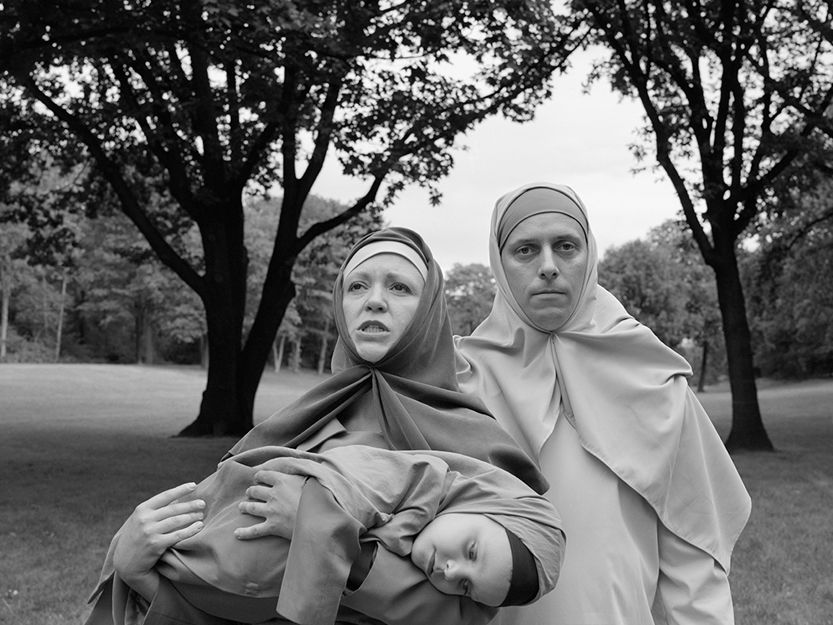
else (Twin) Gabriel
Else Gabriel came to prominence within circles of the GDR art scene during her time at the Dresden Art Academy in the mid 1980s. After becoming a member of the notorious group Autoperforationsartisten, Gabriel began collaborating with artists such as Michael Brendel, Volker (Via) Lewandowsky and Rainer Görß. Their performative works became synonymous with challenging GDR ideology, using shocking techniques such as self-mutilation to question the repressive teaching methods used within schools and universities. After meeting Ulf Wrede (now her partner and father to their two children) in the late 1980s, they began their long term collaborative project under the name else Twin Gabriel in 1991. Their work spans across digital and performative mediums, with themes ranging from social/political repression, late capitalism, the family system and reconfiguring German identity (post-Wall), whilst introducing humour and the absurd into everyday situations. Else Gabriel has been a professor at the Kunsthochschule Berlin-Weißensee since 2009.
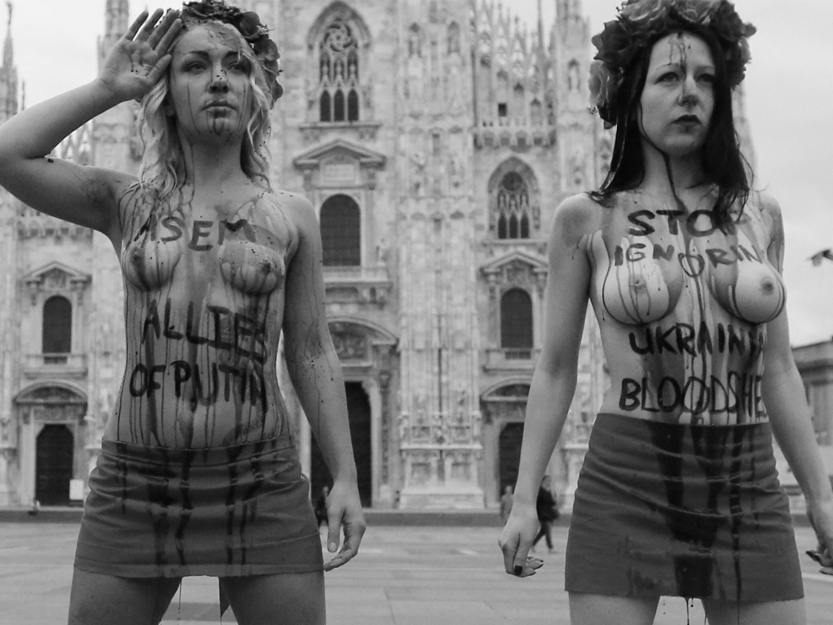
FEMEN
FEMEN is an international women’s movement of brave topless female activists painted with the slogans and crowned with flowers. FEMEN female activists are the women with special training, physically and psychologically ready to implement the humanitarian tasks of any degree of complexity and level of provocation. FEMEN activists are ready to withstand repressions against them and are propelled by the ideological cause alone. FEMEN is the special force of feminism, its spearhead militant unit, modern incarnation of fearless and free Amazons. We live in the world of male economic, cultural and ideological occupation. In this world, a woman is a slave, she is stripped of the right to any property but above all she is stripped of ownership of her own body. All functions of the female body are harshly controlled and regulated by patriarchy. Separated from the woman, her body is an object to monstrous patriarchal exploitation, animated by production of heirs, surplus profits, sexual pleasures and pornographic shows. Complete control over the woman’s body is the key instrument of her suppression; the woman’s sexual demarche is the key to her liberation. Manifestation of the right to her body by the woman is the first and the most important step to her liberation. Female nudity, free of patriarchal system, is a grave-digger of the system, militant manifesto and sacral symbol of women’s liberation. FEMEN’s naked attacks is a naked nerve of the historic woman-system conflict, its most visual and appropriate illustration. Activist’s naked body is the undisguised hatred toward the patriarchal order and new aesthetics of women’s revolution.
(More information here: http://femen.org/about-us/)

Laima Kreivytė
Laima Kreivytė is an art critic, curator and lecturer at Vilnius Academy of Arts and European Humanities University. She participates in feminist art and research projects and works with artists group Cooltūristės. Exhibitions she has curated include Lithuanian pavilion in 53rd Venice Biennale, Baltic Mythologies in 3 Prague Biennale, Woman’s Time in National Gallery of Art, Vilnius, Space Travellers in AR/GE Kunst Gallery Museum, Bolzano among others.

Nguyen Thrin Thi
Nguyen Trinh Thi is a Hanoi-based independent filmmaker and video/media artist. Her diverse practice has consistently investigated the role of memory in the necessary unveiling of hidden, displaced or misinterpreted histories and examined the position of artists in the Vietnamese society. Nguyen studied journalism, photography, international relations and ethnographic film in the United States. Her films and video art works have been shown at festivals and art exhibitions including Jeu de Paume, Paris; CAPC musée d’art contemporain de Bordeaux; the Lyon Biennale 2015; Asian Art Biennial 2015, Taiwan; Fukuoka Asian Art Triennial 2014; and Singapore Biennale 2013. Nguyen is founder and director of Hanoi DOCLAB, an independent centre for documentary film and the moving image art in Hanoi since 2009. She’s also a member of NhaSan Collective, the longest-running alternative art space in Hanoi.
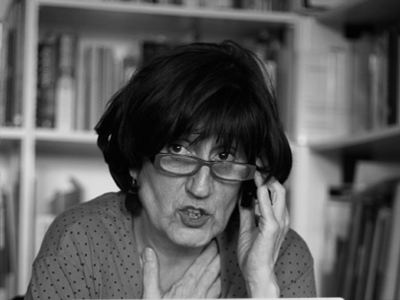
Bojana Pejić
Bojana Pejić (born in Belgrade, Yugoslavia), is an art historian and curator, living in Berlin since 1991. Having studied History of Art at the Faculty of Philosophy in the University of Belgrade, from 1977 to 1991 she was curator at the Student Cultural Center of Belgrade University and organized many exhibitions of Yugoslav and international art. She started to write art criticism in 1971 and was editor of art theory journal “Moment, Belgrade” (1984 – 1991). She organized an international symposium “The Body in Communism” at the Literaturhaus in Berlin in 1995. She was Chief Curator of the exhibition After the Wall – Art and Culture in post-Communist Europe organized by David Elliott at the Moderna Museet, Stockholm, (1999), which was also presented at the Museum of Contemporary Art – Foundation Ludwig, Budapest (2000), and at HamburgerBahnhof, Berlin (2000-2001). She was one of the co-curators of the exhibition Aspects/Positions held in the Museum of Contemporary Art – Foundation Ludwig, Vienna in 1999. Between 2002 and 2004, she was one of international advisers of the Contemporary Art Museum in Kumamoto (Japan) where she also curated a retrospective of Marina Abramovic (2003), which also toured to Morigame (Japan). In 2003, she had the Rudolf Arnheim guest professorship at the Humboldt University in Berlin (history of art). She was adviser of the project De/Construction of Monument organized by the Center for Contemporary Art in Sarajevo where she also held seminars at the Academy of Fine Arts dedicated to the “Communist Body.” (2004-2005) In May 2005 she has defended her Ph.D. “The Communist Body – An Archeology of Images: Politics of Representation and Spatialization of Power the SFR Yugoslavia (1945 -1991)”. She was a Maria Goeppert-Mayer guest professor for International Gender Research at the Institute for Cultural Studies at the University in Oldenburg (2006-2007). Bojana Pejić is the chief curator of Gender Check: Femininity and Masculinity in the Art of Eastern Europe (2009-2010) at MUMOK, Vienna and the Zacheta National Gallery of Art, Warsaw. She is also the editor of the “Gender Check Reader”. Dr. Bojana Pejić teaches at the Bauhuas University in Weimar and works as an independent curator and writer.
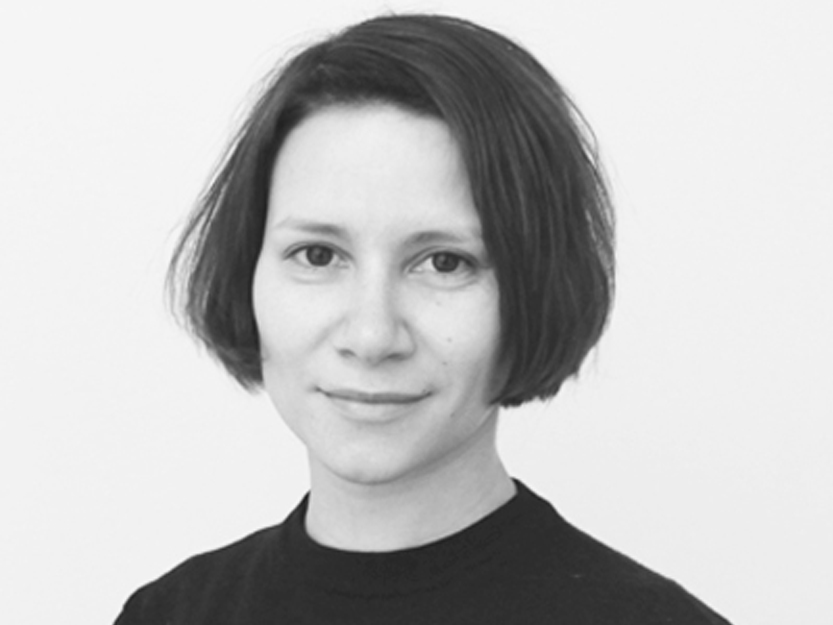
Sasha Pirogova
Pirogova is a performance and video artist, for her the two disciplines are inter-connected. The people in Pirogova’s work adapt automatically to the mechanics of their physical environments, relinquishing their autonomy to the rhythm and structure of the work. Her video-performance BIBLIMLEN (2013) is a behind-the-scenes look at Moscow’s Russian State Library (the former Lenin Library), in which the interior architecture of the building becomes an active co-author of the piece. An earlier video-performance, QUEUE (2011), based on Vladimir Sorokin’s novel of the same name (1983), is a nervous but ‘bizarrely funny saga of a quintessential Russian institution, the interminably long line’ (NYT, 2011). Creating an absurdist choreography of hysterics, dependence and clanship, Pirogova takes pains to replay the text through dance to identify the queue as not a physical but a psycho-social contemporary condition. After graduating from the Physics Department at Moscow State University in 2010, she received a degree in 2014 from the Rodchenko Art School in Video and New Media in Moscow. She has been awarded prizes at the Extra Short Film Festival, ESF (2012) as well as the Innovation Prize in the ‘New Generation’ category (2014). She has participated in various exhibitions, such as Burning News, Hayward Gallery, London (2014), I saw lightning, Udarnik, Moscow (2014) and in the Manifesta 10, parallel program, St. Petersburg (2014). Working with performance, she has also participated in different festivals, including: the 6th International Festival of Video, Performance and Technology, Lisbon (2014), VIII Andrei Tarkovsky International Film Festival, Ivanovo (2014), Cinedans Dance on Screen Festival, Amsterdam (2014) and Now & After International Video Art Festival, The State Museum of GULAG, Moscow (2014).
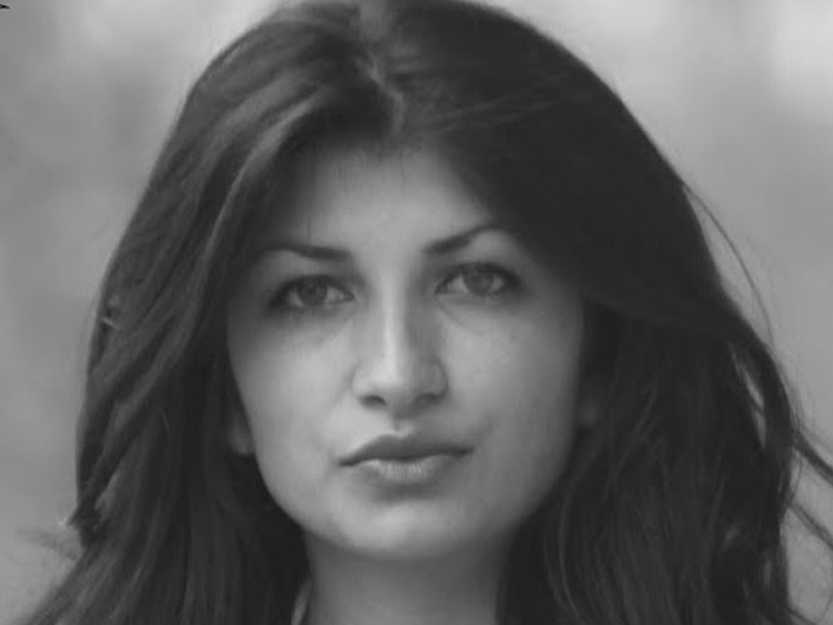
Selma Selman
Selma Selman is an artist of Romani origins. Her work is representative of her life struggles and the struggles of her community. Selman utilizes a multiplicity of art mediums, ranging from performance, painting, and photography to video installations, in order to express herself as an individual, a woman, and an artist. Her work, though personal, is also political. Selman defines herself as an artist of Roma origins, and not a Romani artist. The difference is subtle, but critical: through her work, Selman seeks to speak to the universal human condition, utilizing her background as a lens through which she can understand the entirety of the human experience. In her work, she wishes to break down prejudices that stereotype her community as a collective, robbing members of their right to individual expression. She earned her Bachelor of Fine Arts in 2014 from Banja Luka University’s Department of Painting, where she studied under the supervision of Veso Sovilj, and worked with renowned Bosnian performance artist Mladen Miljanović, who represented Bosnia and Herzegovina at the 55th Venice Biennial in 2013. Selman participated in Tania Brugera’s International Summer Academy in Salzburg, “Arte Util” (Useful Arts) in 2013. She was a fellow for the Roma Graduate Preparation Program at the Central European University in Budapest, Hungary the following year. That year, Selman was also the recipient of the prestigious “Zvono Award”, given to the best young artist in Bosnia and Herzegovina, winning her a residency in New York City. Her work has been shown at numerous international festivals and exhibitions, including the Luxembourg City Film Festival, Sarajevo’s PichWise Festival, Slam Fest in Osijek, the Summer Academy is Salzburg, BL-art festival in Banja Luka, and the Perforation Festival: A Week of Live Art in Dubrovnik, Croatia. Thus far, she has had several solo exhibitions, with “Me postojisarav – Postojim – I exist” being her first solo show in the United States, exhibited at Dreamland Gallery. She is currently pursuing her MFA at Syracuse University, where she also works as a teaching assistant.
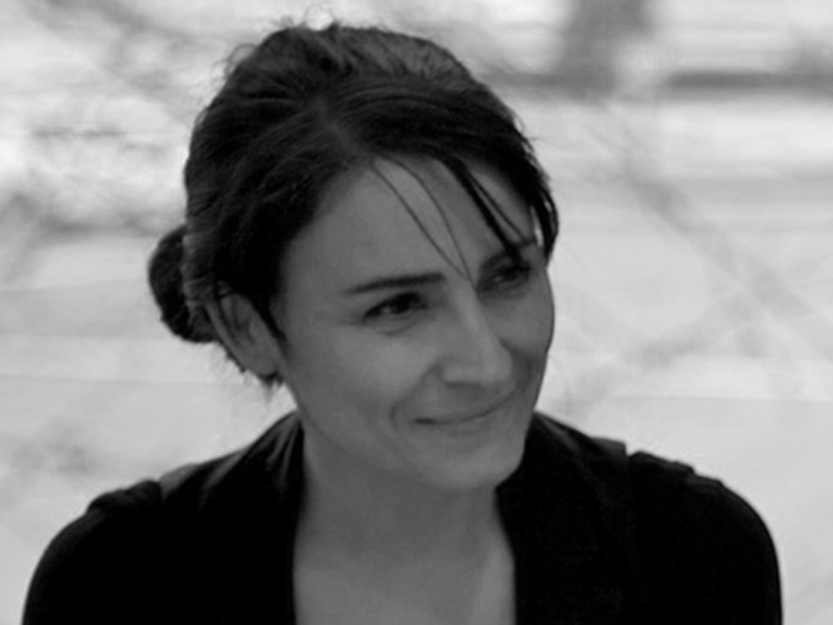
Mariana Vassileva
Vassileva’s work looks at how boundaries are tacitly implied. She is interested mainly in experiencing ‘the boundary’, the fine line between the known and unknown, the accepted and unaccepted, in a manner that is resonant with a sense of balance. It comes back to her own personal experiences and her movement between places, leaving the communist regime and her beloved family in Bulgaria behind. Vassileva’s home was and is always Bulgaria, in the northern part of the country where her mother still lives. From this perspective, her work has always reflected another world, a world outside or beyond where she is. This sense of otherness inspires Vassileva, introducing an autobiographical and biographical approach, between the self and the other, between personal and social needs, between needs and dreams, are recurrent themes spreading throughout her work. Mariana Vassileva moved to Berlin in 1989. She has studied pedagogy and psychology at Veliko Turnovo University. After this, she wanted to study art in the Academy of Art in Sofia, but instead worked as one of the artist-professors. She first went to Leipzig to study theatre and to prepare herself for art school, where two years later, she was accepted into the Universität der Künste in Berlin. After her studies, she worked for about three years in scenography for a film company, drawing large-format mountain- and cityscapes for film backdrops. Then, by virtue of some sales of her early work, Vassileva was able to devote herself to being an artist full-time.
PHOTOS OF THE SYMPOSIUM AND FINISSAGE
Photo Credit: Camille Blake


 Back to Homepage
Back to Homepage